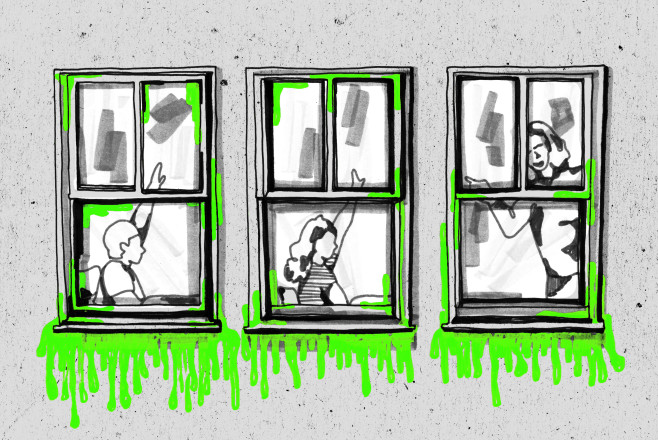Listen to Story here: https://www.revealnews.org/episodes/poison-lurking-in-schools/
Across the country, tens of thousands of public schools could be contaminated with toxic polychlorinated biphenyls – compounds more commonly known as PCBs, which were used widely in building materials such as window caulk. PCBs have been linked to everything from skin conditions to cancer. On this hour of Reveal, we take a closer look at this sleeper chemical that was banned in 1979 but still poses a serious health risk to kids today.
No one knows how many schools have this ticking time bomb lurking in their windows, but reporter David DesRoches of WNPR in Connecticut starts us off with the story of a man who used to put PCBs in schools and now is working to get them out. People call him the “repentant caulker.” He secretly tests caulk in school windows to see if it contains dangerous PCBs. Not everyone’s happy with him: If PCBs are found, they have to be removed – and that could cost big money.
PCBs have shown up in schools built before 1979, including in affluent Malibu, California. Southern California Public Radio’s Stephanie O’Neill takes us to the front lines of the outrage. Parents who were worried that the school district wasn’t doing enough to protect kids and staff have taken the case to court. A teacher who calls herself “Cancer Patient No. 1” tells O’Neill her story.
So how did PCBs first find their way into the environment in the U.S.? DesRoches visits the small town of Anniston, Alabama. In 1929, the Swann Chemical Co. started making PCBs in a small factory there. In 1935, Swann was bought out by another chemical company. You might know it: Monsanto.
Today, we recognize Monsanto Co. as a global agricultural giant. Besides being a producer of herbicides such as Roundup, it’s at the forefront of biotechnology. But half a century ago, PCBs were Monsanto’s golden ticket – the company was the country’s sole manufacturer of the compound.
After millions of dollars were spent cleaning up the soil in Anniston, tests by the Environmental Protection Agency showed that PCB levels in the outdoor air haven’t changed at all in a decade. It’s this lasting Monsanto legacy that led Anniston residents to sue the company – and they won. The case was settled with a $600 million payout, but residents saw barely any of this money. Most got less than $7,000 each.
So why isn’t the EPA doing more to protect people from PCB exposure? Former employees say it’s because the agency has a history of making decisions that benefit industry. Considering that emerging science is showing that PCBs are more dangerous than we thought, this is a cause for concern.




